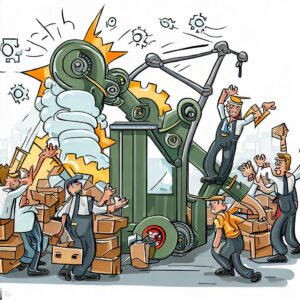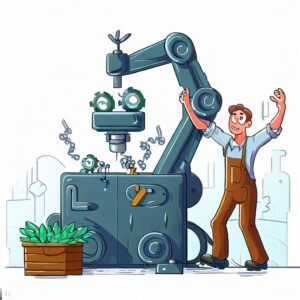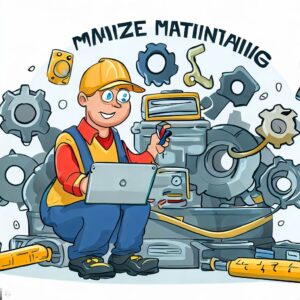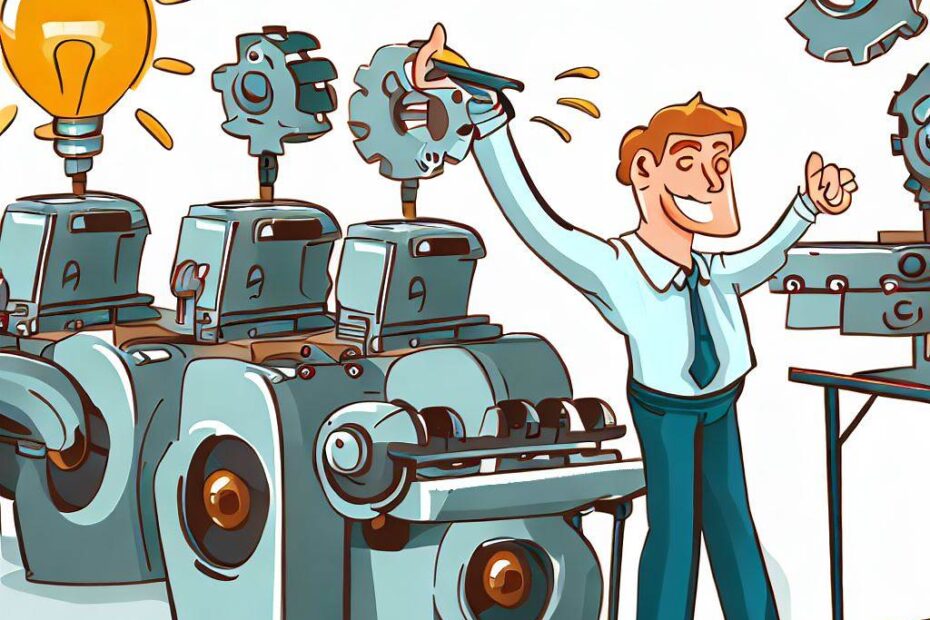As a manufacturing company, it is crucial to stay competitive by producing high-quality products while keeping costs low. In today’s fast-paced business environment, time is money, and any delay can lead to lost profits. Thus, it is imperative to look for innovative ways to increase production efficiency and output. In this article, we will discuss various strategies that can help you increase production in your manufacturing facility.
Hiring Skilled Workers
One of the most critical steps to increase production in manufacturing is to hire skilled workers. Experienced and trained workers are essential to operate machinery efficiently, identify problems quickly, and resolve them promptly. They possess the technical skills and knowledge required for complex manufacturing processes, contributing to high-quality output, reducing lead times, and improving overall efficiency.
According to the Bureau of Labor Statistics (BLS), technical and trade schools provide comprehensive training programs in industrial maintenance, electronics, welding, and other skills necessary for manufacturing jobs. These training programs equip workers with the necessary knowledge and expertise to excel in their roles, ensuring that they can quickly adapt to new technologies, processes, and equipment. By hiring skilled workers, companies can minimize the learning curve and increase productivity, ultimately leading to increased profitability.
Furthermore, skilled workers bring a wealth of knowledge and experience to the workplace. They can identify potential bottlenecks in the production process and recommend solutions to optimize performance. Besides, they can also contribute to a positive work culture, where safety, quality, and performance are top priorities. This can lead to improved morale, reduced turnover rates, and increased job satisfaction among employees.
It is worth noting that finding and retaining skilled workers can be challenging in today’s competitive labor market. Therefore, it is vital for companies to provide competitive wages and benefits packages, opportunities for professional development and growth, and a supportive work environment. Investing in employee training and development programs can also help retain skilled workers and enhance their skills, increasing their value to the organization over time.
Hiring skilled workers is a crucial step towards increasing production in manufacturing. They possess the technical knowledge, experience, and problem-solving skills needed to optimize production processes, reduce lead times, and improve overall efficiency. To attract and retain skilled workers, companies must offer competitive compensation, benefits, and opportunities for professional growth and development.

Investing in Automation and Robotics
The manufacturing industry is undergoing a transformation with the advent of automation and robotics. These technologies enable companies to improve quality control, increase efficiency, and reduce labor costs significantly. Automated systems can perform repetitive tasks faster and more accurately than humans, which can streamline workflow processes and save time and effort. Furthermore, robots can work without rest, leading to increased productivity and output.
The International Federation of Robotics reports that robots are becoming more affordable, making them accessible to small and medium-sized businesses. By 2022, the global stock of installed robots is expected to reach over three million units. As such, investing in automation and robotics can increase production capacity and improve overall efficiency while reducing costs.
One significant advantage of automation and robotics is their ability to operate in hazardous environments without endangering human lives. For example, using robots for welding, painting, or handling hazardous materials eliminates the risk of employee injury or illness. Additionally, automation and robotics can be programmed to perform intricate tasks with precision, consistency, and accuracy. This can lead to reduced errors and waste in the production process, ultimately improving product quality and customer satisfaction.
Finally, automation and robotics also enhance data collection and analysis. With sensors and software, these technologies can collect data on various aspects of production, including machine performance, downtime, and energy consumption. The insights gleaned from this data can help manufacturers make informed decisions about equipment maintenance, process optimization, and resource allocation.
Automation and robotics are transforming the manufacturing industry by increasing productivity and efficiency, reducing costs, enhancing safety, and improving product quality. Investing in these technologies can give companies a competitive edge and position them for growth in an increasingly digitized world.

Implementing Lean Manufacturing Principles
Lean manufacturing principles are vital for businesses seeking to eliminate waste, reduce costs, and optimize production processes. The five primary principles of lean manufacturing include value, flow, pull, perfection, and respect for people. Implementing these principles can lead to a streamlined and highly efficient production process that reduces the amount of resources required for manufacturing products.
By eliminating non-value-added activities and optimizing workflow processes through lean manufacturing principles, companies can minimize production time and improve output and profitability. According to the Lean Enterprise Institute, implementing lean principles can lead to reduced lead times, improved quality, and increased productivity.
The value principle involves identifying the value that each activity adds to the overall production process and eliminating any non-value-adding activities. This leads to a more streamlined process that eliminates unnecessary steps while reducing costs and increasing efficiency.
The flow principle focuses on creating a continuous, uninterrupted flow of work throughout the production process. By minimizing interruptions and bottlenecks in the workflow, companies can increase throughput and reduce lead times.
The pull principle involves producing goods only when they are needed, based on customer demand. This method reduces inventory levels and minimizes waste, leading to cost savings and improved efficiency.
The perfection principle is about continuously striving for improvement by identifying areas where processes can be optimized and enhanced. This principle requires a culture of continuous improvement and a willingness to adopt new ideas and practices.
Finally, the respect for people principle acknowledges the importance of empowering employees to identify and solve problems in the production process. This principle fosters a culture of collaboration and teamwork, resulting in higher employee engagement and job satisfaction.
Implementing lean manufacturing principles can lead to significant improvements in production efficiency, quality, and profitability. By focusing on eliminating waste, optimizing workflow processes, reducing lead times, and fostering a culture of continuous improvement, companies can stay competitive in today’s fast-paced business environment.

Optimizing Equipment Maintenance
Equipment downtime is a significant hindrance to production efficiency and output. It can lead to lost profits, decreased employee productivity, and customer dissatisfaction. Regular maintenance of machinery and equipment is essential to prevent unexpected breakdowns and minimize equipment downtime.
According to the US Department of Energy’s Office of Energy Efficiency and Renewable Energy, proper equipment maintenance can reduce energy consumption by up to 20%. This results in cost savings for the company while improving overall energy efficiency. By optimizing equipment maintenance, you can increase machine uptime, reduce unplanned downtime, and improve overall efficiency.
Regular maintenance involves inspecting and replacing worn-out parts and performing routine cleaning and lubrication. In addition, adopting predictive maintenance practices can help identify potential issues before they escalate into significant problems that can lead to costly repairs or downtime.
An effective maintenance program includes tracking equipment performance data to identify patterns of wear and tear, identifying critical parts that require more frequent monitoring, and scheduling preventative maintenance activities accordingly. Furthermore, having a well-trained workforce that can perform routine maintenance tasks can significantly reduce downtime, minimize repair costs, and improve overall equipment performance.
Regular equipment maintenance is essential to ensure production efficiency and prevent unexpected breakdowns that can cause equipment downtime. By adopting best practices such as predictive maintenance, tracking performance data, and investing in employee training, companies can optimize equipment performance and reduce costs associated with downtime and repairs.

Conclusion
In conclusion, increasing production in manufacturing requires a combination of strategies. Hiring skilled workers, investing in automation and robotics, implementing lean manufacturing principles, and optimizing equipment maintenance are all effective ways to increase production efficiency and output. By taking these steps, you can stay competitive, reduce costs, and increase profitability.
Sources
- Bureau of Labor Statistics: https://www.bls.gov/ooh/production/machinists-and-tool-and-die-makers.htm#tab-4
- International Federation of Robotics: https://ifr.org/ifr-press-releases/news/global-sales-of-industrial-robots-remain-on-record-course-in-2021
- Lean Enterprise Institute: https://www.lean.org/WhatIsLean/Principles.cfm
- US Department of Energy: https://www.energy.gov/eere/amo/articles/improving-maintenance-energy-efficiency
